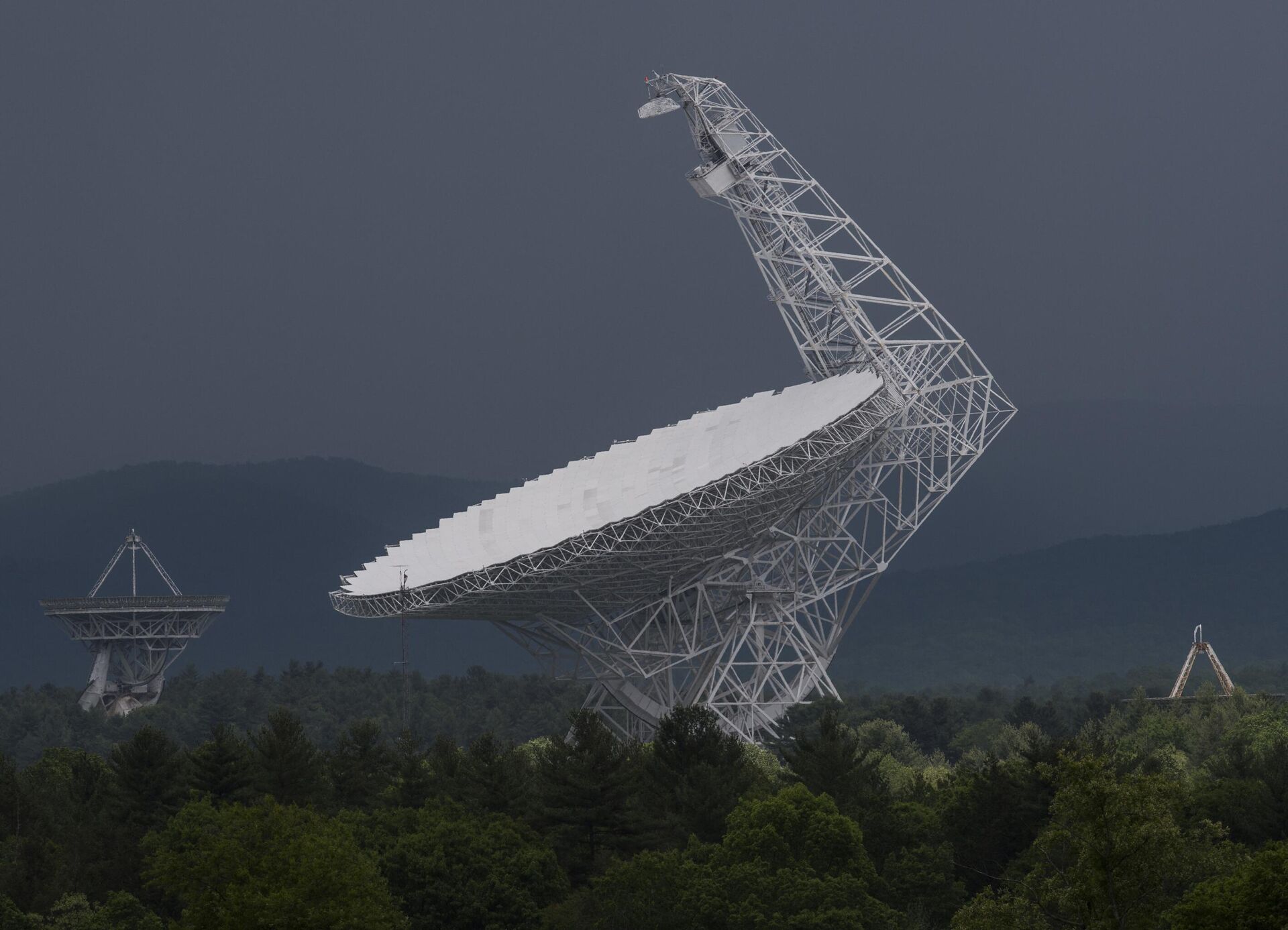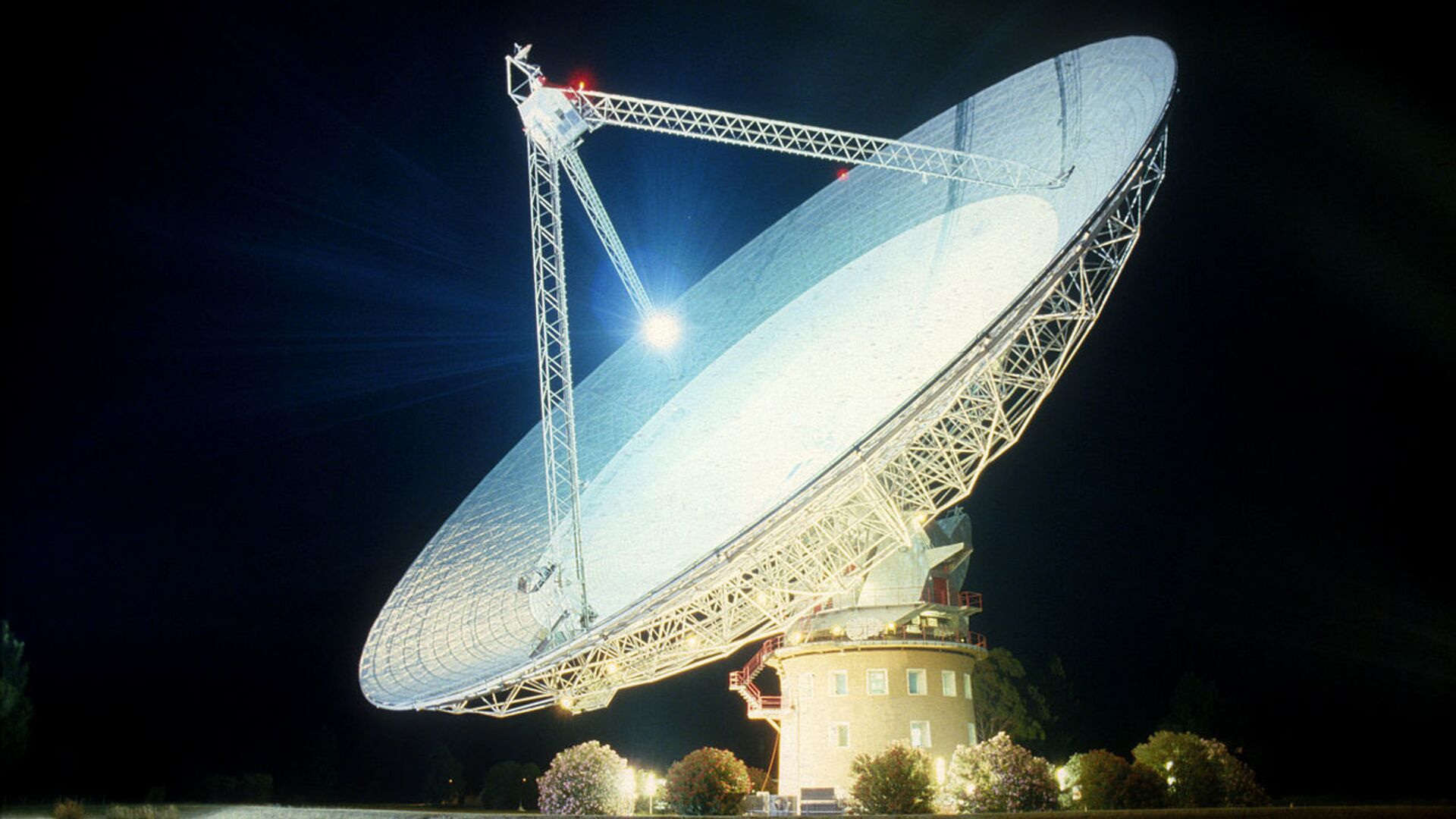https://sputnikglobe.com/20230903/twinkling-radio-signals-from-space-may-aid-alien-life-search--1113088025.html
'Twinkling' Radio Signals From Space May Aid Search For 'Alien Life'
'Twinkling' Radio Signals From Space May Aid Search For 'Alien Life'
Sputnik International
A novel technique conceived by scientists will, hopefully, offer a breakthrough in the search for alien life in planet Earth’s galaxy.
2023-09-03T08:11+0000
2023-09-03T08:11+0000
2023-09-03T09:23+0000
beyond politics
search for extraterrestrial intelligence institute (seti)
extra-terrestrials
andrew siemion
science & tech
berkeley
parkes observatory radio telescope
breakthrough listen
https://cdn1.img.sputnikglobe.com/img/07e5/03/17/1082426845_0:70:1281:790_1920x0_80_0_0_5c289853dc5a1f6a5c6fc8c6ede74b71.jpg
A novel technique conceived by scientists will, they hopeful, offer a breakthrough in the search for alien life in planet Earth’s galaxy, the Milky Way.The breakthrough approach is tailored to filter signals that may, potentially, be sent out by extraterrestrial (ET) intelligence, from various other ground or satellite radio interference.The innovation helping to seek out true alien ‘techno-signature’ has been developed by researchers at the University of California-Berkeley’s Breakthrough Listen project.Since the first trailblazing projects started years ago, launched by organizations such as the SETI (Search for Extraterrestrial Intelligence) Institute and Breakthrough Listen, they have relied on Earth-based radio telescopes in their endeavors. However, all sorts of “interference” has triggered so-called “false alarms".The newly developed technique checks for evidence that the radio signal has actually passed through interstellar space. It is this approach that, presumably, will allow to rule out the possibility that the signal is just radio interference from a "cluttered background".'Scintillation Technique'Scientists have discovered that as signals pass through the interstellar medium (ISM) they “scintillate”. This effect, referred to by the researchers as a kind of “twinkling”, is due to interference with cold plasma.Accordingly, a computer algorithm was developed by Bryan Brzycki, a UC Berkeley graduate student, to analyze these scintillation patterns of narrowband signals. The team believe that if a signal crossed through the ISM, it may, effectively, be identified as a signal of particular interest.However, the technique is effective only in the case of signals originating beyond 10,000 light-years, noted the researchers. This is explained by the fact that to display sufficient scintillation, it is necessary for the signals to pass through enough ISM.Nevertheless, Breakthrough Listen project principal investigator Dr Andrew Siemion, director of the Berkeley SETI Research Center, touted the innovative technique as “one of the biggest advances in radio SETI in a long time”.
https://sputnikglobe.com/20220914/from-techno--signatures-to-astro-archeological-artifacts-search-continues-for-alien-life-1100766853.html
berkeley
Sputnik International
feedback@sputniknews.com
+74956456601
MIA „Rossiya Segodnya“
2023
News
en_EN
Sputnik International
feedback@sputniknews.com
+74956456601
MIA „Rossiya Segodnya“
Sputnik International
feedback@sputniknews.com
+74956456601
MIA „Rossiya Segodnya“
alien life, radio signals from space, alien techno-signature, breakthrough listen project, berkeley seti research center, extraterrestrial intelligence, et, et signals, search for alien life
alien life, radio signals from space, alien techno-signature, breakthrough listen project, berkeley seti research center, extraterrestrial intelligence, et, et signals, search for alien life
'Twinkling' Radio Signals From Space May Aid Search For 'Alien Life'
08:11 GMT 03.09.2023 (Updated: 09:23 GMT 03.09.2023) Since humans started searching for signs of alien life, it has been assumed that if mankind uses radios to communicate, "aliens" might do the same. This triggered the probe for unnatural-looking radio signals from fixed points far away in space, with several projects analyzing such signals active for years.
A novel technique conceived by scientists will, they hopeful, offer a breakthrough in the search for
alien life in planet Earth’s galaxy, the Milky Way.
The breakthrough approach is tailored to filter signals that may, potentially, be sent out by extraterrestrial (ET) intelligence, from various other ground or satellite radio interference.
The innovation helping to seek out true alien ‘techno-signature’ has been
developed by researchers at the University of California-Berkeley’s
Breakthrough Listen project.
Breakthrough Listen was founded in January 2016, with its science program based at the Berkeley SETI Research Center at the Astronomy Department of the University of California, Berkeley. The project uses radio wave observations from the Robert C Byrd Green Bank Telescope, situated in the National Radio Quiet Zone, West Virginia, and the Parkes radio astronomy observatory in Australia, as well as visible light observations from the Automated Planet Finder. While several candidate detections have been made, none have been confirmed.
Since the first trailblazing projects started years ago, launched by organizations such as the SETI (Search for Extraterrestrial Intelligence) Institute and Breakthrough Listen, they have relied on Earth-based radio telescopes in their endeavors. However, all sorts of “interference” has triggered so-called “false alarms".
The newly developed technique checks for evidence that the radio signal has actually passed through interstellar space. It is this approach that, presumably, will allow to rule out the possibility that the signal is just radio interference from a "cluttered background".
'Scintillation Technique'
Scientists have discovered that as signals pass through the interstellar medium (ISM) they “scintillate”. This effect, referred to by the researchers as a kind of “twinkling”, is due to interference with cold plasma.
Accordingly, a computer algorithm was developed by Bryan Brzycki, a UC Berkeley graduate student, to analyze these scintillation patterns of narrowband signals. The team believe that if a signal crossed through the ISM, it may, effectively, be identified as a signal of particular interest.
“This implies that we could use a suitably tuned pipeline to unambiguously identify artificial emission from distant sources vis-a-vis terrestrial interference… Further, even if we didn’t use this technique to find a signal, this technique could, in certain cases, confirm a signal originating from a distant source, rather than locally. This work represents the first new method of signal confirmation beyond the spatial reobservation filter in the history of radio SETI,” Imke de Pater, UC Berkeley professor emeritus of astronomy, was cited as saying.
However, the technique is effective only in the case of signals originating beyond 10,000 light-years, noted the researchers. This is explained by the fact that to display sufficient scintillation, it is necessary for the signals to pass through enough ISM.
Nevertheless, Breakthrough Listen project principal investigator Dr Andrew Siemion, director of the Berkeley SETI Research Center, touted the innovative technique as “one of the biggest advances in radio SETI in a long time”.
“It’s the first time where we have a technique that, if we just have one signal, potentially could allow us to intrinsically differentiate it from radio frequency interference. Having this new technique and the instrumentation capable of recording data at sufficient fidelity such that you could see the effect of the interstellar medium is incredibly powerful,” Siemion said. He added that from now on, Breakthrough Listen would rely on the “scintillation” technique in conjunction with other methods during its SETI observations.

14 September 2022, 13:58 GMT




